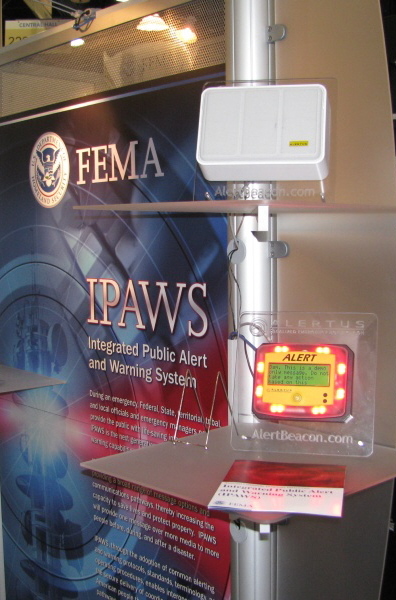Alertus Interoperability
Alertus Technologies unifies all of your facility infrastructure and IT assets to streamline the emergency notification process and ensure absolute consistency. We make integrating your enterprise notification modalities easy and ensure total consistency and maximum impact. Alertus also supports FEMA’s Common Alerting Protocol (CAP), and our system is interoperable with the organization’s Integrated Public Alert Warning System (IPAWS).
Common Alerting Protocol (CAP)
From its inception, the Alertus system was designed with a focus on web standard interoperability and compatibility. Alertus was one of the first companies to support version 1.2 of the Common Alerting Protocol (CAP) specification, and we are committed to supporting all future CAP releases.
When the Alertus system processes a CAP file, it constructs and disseminates a detailed alert notification using the core CAP fields (i.e., identifier, duration, headline, description, etc.). Users can also set up and configure multiple alert profiles that are activated when CAP alerts meeting specified urgency/severity/certainty criteria are received. If the CAP alert specifies a geographic area, only devices located within that area will be activated.
Integrated Public Alert Warning System (IPAWS)
In 2009, FEMA contracted with Alertus through Northrop Grumman to study Alertus' radio subcarrier systems technology for usefulness in the nation's new Integrated Public Alert Warning System (IPAWS).
In 2010 at the annual NAB Conference in Las Vegas (attended by more than 80,000 people), FEMA demonstrated a variety of cutting edge in-building emergency notification capabilities provided by Alertus, including the Alert Beacon®, text-to-speech voice annunciator, digital signage override, and Alertus Desktop Notification computer alerting. The IPAWS demonstration included several CAP producers, which are dispatch interfaces used to compose and post CAP messages. The other half of the demo consisted of a few CAP consumers, including the Alertus facility notification system, which received data from the COG and communicated it publicly.
During the event, FEMA personnel dispatched messages corresponding to predetermined scenarios. A FEMA laptop operated the Alertus Server Software, which was configured to poll the COG, retrieve the data, and transmit the emergency notifications to the Alert Beacons and other Alertus facility notification end-points.
“We particularly appreciated the Alert Beacons’ ability to interface with external audio-visual devices such as sirens, strobes, television, and scrolling marquees. We feel that these types of displays are well-suited for notifying a portion of our disabled population and complying with ADA requirements.
”



